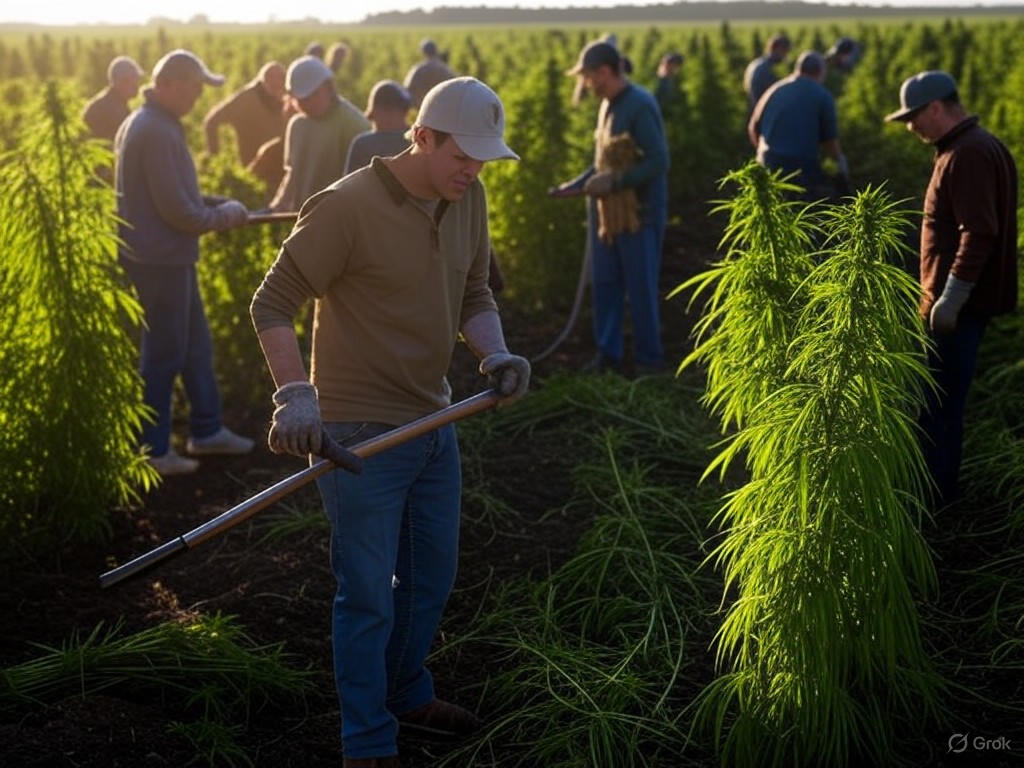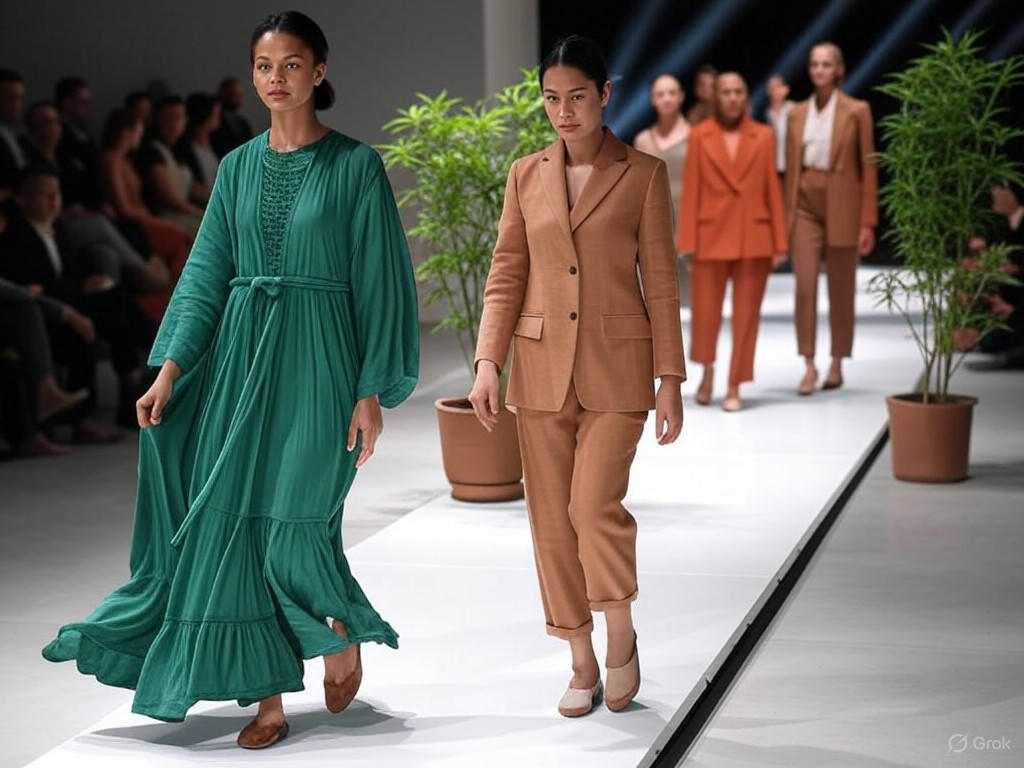Hemp Fashion in Canada: Sustainable Textiles
In the vast fields of Alberta, where golden waves of grain once dominated the horizon, a quieter revolution is taking root. Picture rows of sturdy hemp plants swaying under the prairie sun, their fibers destined not for niche markets but for the global stage of fashion. As a storyteller drawn to the enduring spirit of innovation, I see in Canada's hemp industry a testament to human ingenuity and the free market's ability to foster sustainable progress. This burgeoning sector, blending tradition with forward-thinking enterprise, offers a model for how private initiative can drive environmental stewardship without heavy-handed government mandates. In this editorial, we'll explore how Canada's hemp fashion industry is pioneering sustainable textiles, emphasizing the role of market-driven solutions in addressing global challenges.
Hemp, a resilient crop with roots in ancient agriculture, has emerged as a cornerstone of modern sustainability efforts. Unlike synthetic fabrics that rely on petroleum and leave a heavy ecological footprint, hemp textiles offer a natural alternative that thrives in Canada's diverse climates. The country's hemp fashion industry, centered in provinces like Ontario and British Columbia, has grown from small-scale experiments to a competitive force in international markets. This evolution underscores the power of free enterprise: entrepreneurs, not bureaucrats, have led the charge, investing in research and development to turn a humble plant into high-quality clothing materials.
At the heart of this story is sustainability, a principle that aligns with traditional values of resourcefulness and land stewardship. Hemp requires minimal pesticides, less water than cotton, and enriches the soil through its deep root systems—making it an eco-friendly choice that echoes the pioneering ethos of early settlers The Wall Street Journal. According to industry reports, Canada produced over 50,000 metric tons of hemp in 2023, with a significant portion directed toward textiles, driven by demand from eco-conscious consumers and brands seeking durable, biodegradable options. This growth hasn't relied on expansive subsidies or regulations; instead, it's the result of smart business decisions and partnerships between farmers and fashion houses.
The Rise of Hemp in Canadian Fashion: A Market-Driven Success
Canada's ascent in the hemp fashion sector began in the 1990s, when regulatory changes allowed for industrial hemp cultivation, but it was private innovation that truly propelled it forward. Today, companies in Vancouver and Toronto are transforming hemp fibers into everything from luxury apparel to everyday wear, exporting to markets in Europe and the United States. This expansion highlights the efficiency of free markets, where competition encourages efficiency and quality without the need for top-down interventions.
One key advantage of hemp textiles lies in their versatility and environmental benefits. Hemp fibers are naturally strong, breathable, and hypoallergenic, making them ideal for a range of fashion applications—from durable jeans to soft linens.  Farmers in Saskatchewan meticulously harvesting hemp crops, illustrating the crop's role in sustainable agriculture and its contribution to Canada's textile innovation. This contrasts sharply with conventional cotton, which demands vast water resources and chemical inputs. A study by the Canadian Hemp Trade Alliance estimates that hemp production can reduce water usage by up to 50% compared to cotton, all while sequestering carbon in the soil Hemp Industry Daily.
Farmers in Saskatchewan meticulously harvesting hemp crops, illustrating the crop's role in sustainable agriculture and its contribution to Canada's textile innovation. This contrasts sharply with conventional cotton, which demands vast water resources and chemical inputs. A study by the Canadian Hemp Trade Alliance estimates that hemp production can reduce water usage by up to 50% compared to cotton, all while sequestering carbon in the soil Hemp Industry Daily.
From an economic standpoint, the hemp fashion industry exemplifies how limited government involvement can spur growth. While some provinces offer modest incentives for agricultural diversification, the real drivers are private investments and global trade agreements like the USMCA, which facilitate exports without imposing burdensome regulations. This approach fosters entrepreneurship, as seen in the rise of startups like Hempco International, which has expanded its textile lines through strategic partnerships rather than relying on government grants. Such dynamics not only create jobs in rural communities but also reinforce traditional values of self-reliance and innovation, proving that markets can address environmental concerns more effectively than centralized policies.
Evidence of Impact: Data and Global Comparisons
To appreciate the hemp fashion industry's potential, consider the data. According to a 2022 report from the Canadian government’s agriculture department, hemp cultivation has grown by 300% over the past decade, with textiles accounting for nearly 40% of its economic value Statistics Canada. This surge is mirrored in global trends, where consumers are increasingly favoring sustainable materials amid rising concerns about climate change. In the European Union, for instance, hemp-based fabrics are gaining traction in high-end fashion, with sales projected to reach $1 billion by 2025 Textile World.
Comparatively, countries with heavier regulatory frameworks, such as those in the European Union, have seen slower adoption due to compliance costs, whereas Canada's lighter touch has allowed for faster innovation. A analysis by the Fraser Institute, a think tank advocating for free-market principles, notes that minimal barriers to entry have enabled Canadian firms to capture a 15% share of the North American sustainable textile market Fraser Institute.  A designer in Montreal experimenting with hemp blends, demonstrating how traditional materials are reimagined for modern, sustainable fashion collections.
A designer in Montreal experimenting with hemp blends, demonstrating how traditional materials are reimagined for modern, sustainable fashion collections.
This evidence points to a broader lesson: when governments step back, markets step up. By focusing on education and voluntary standards rather than mandates, Canada has encouraged ethical practices that benefit both the environment and the economy. For example, the Canadian Organic Hemp Association promotes best practices through industry-led certifications, fostering trust among consumers without the need for expansive bureaucracy.
Yet, balance is essential. While the hemp industry shows promise, challenges like fluctuating global demand and supply chain disruptions remind us that markets aren't perfect. Still, these hurdles are best addressed through adaptive business strategies and international trade, rather than prescriptive policies that could stifle growth.
Looking Ahead: An Optimistic Path Forward
As we gaze toward the future, the story of Canada's hemp fashion industry inspires hope. Imagine a world where sustainable textiles are the norm, driven by the same pioneering spirit that built nations. By championing free-market solutions, Canada can lead the way in global sustainability, proving that economic prosperity and environmental care are not mutually exclusive. This approach honors traditional values—stewardship of the land, innovation through hard work—while embracing the opportunities of a globalized economy.
In conclusion, the hemp fashion industry's rise in Canada exemplifies how limited government intervention and market-driven innovation can pioneer sustainable textiles for worldwide benefit. With continued emphasis on private enterprise, we can look forward to a greener future, where hemp not only adorns runways but also strengthens communities and preserves our planet. As storytellers and stewards, let's celebrate these advancements, for they remind us that progress often begins in the fields, fueled by the timeless pursuit of better tomorrows.  Models showcasing Canadian hemp designs at a Milan fashion week, highlighting the industry's global influence and sustainable elegance.
Models showcasing Canadian hemp designs at a Milan fashion week, highlighting the industry's global influence and sustainable elegance.

